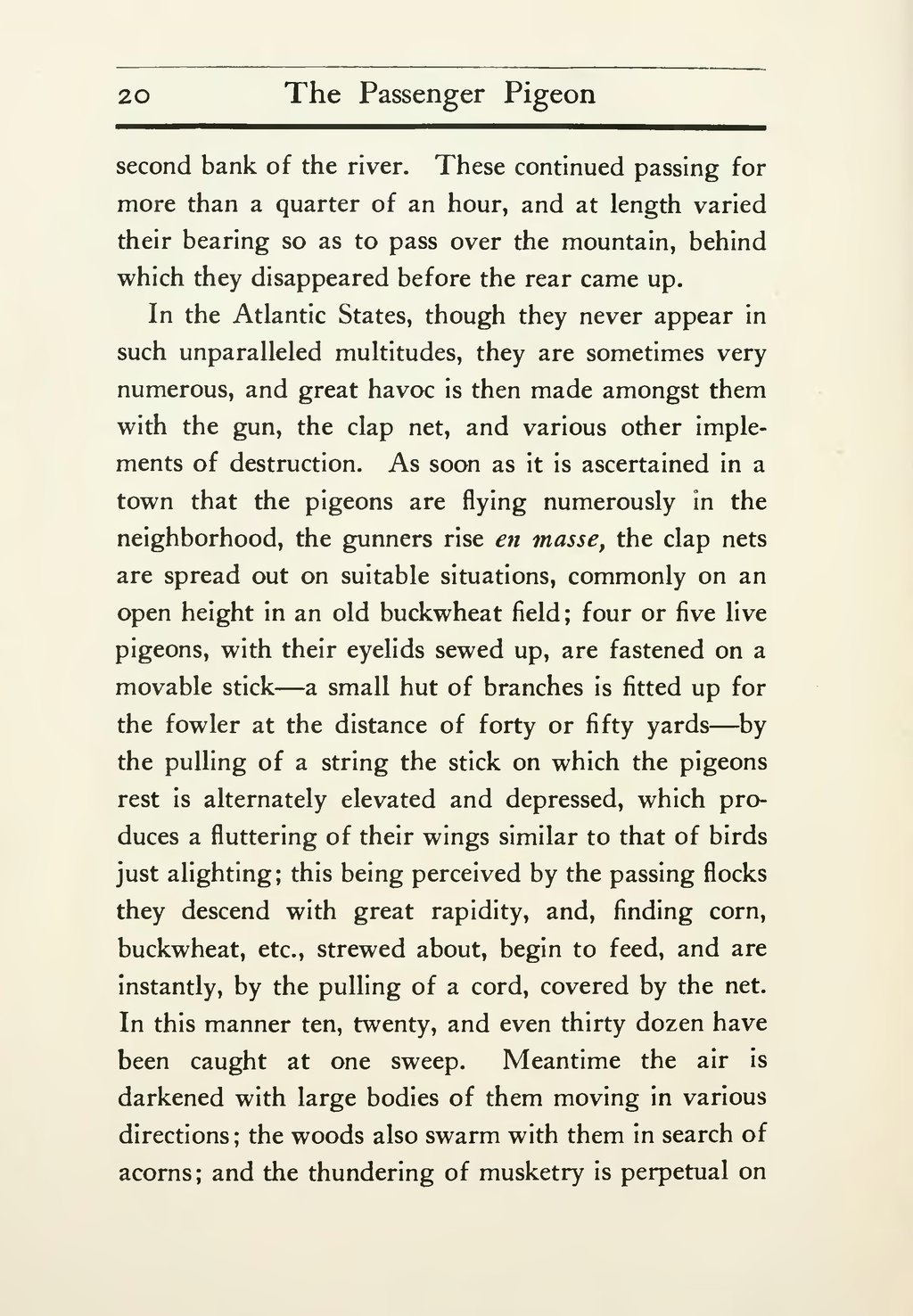second bank of the river. These continued passing for more than a quarter of an hour, and at length varied their bearing so as to pass over the mountain, behind which they disappeared before the rear came up.
In the Atlantic States, though they never appear in such unparalleled multitudes, they are sometimes very numerous, and great havoc is then made amongst them with the gun, the clap net, and various other implements of destruction. As soon as it is ascertained in a town that the pigeons are flying numerously in the neighborhood, the gunners rise en masse, the clap nets are spread out on suitable situations, commonly on an open height in an old buckwheat field; four or five live pigeons, with their eyelids sewed up, are fastened on a movable stick—a small hut of branches is fitted up for the fowler at the distance of forty or fifty yards—by the pulling of a string the stick on which the pigeons rest is alternately elevated and depressed, which produces a fluttering of their wings similar to that of birds just alighting; this being perceived by the passing flocks they descend with great rapidity, and, finding corn, buckwheat, etc., strewed about, begin to feed, and are instantly, by the pulling of a cord, covered by the net. In this manner ten, twenty, and even thirty dozen have been caught at one sweep. Meantime the air is darkened with large bodies of them moving in various directions; the woods also swarm with them in search of acorns; and the thundering of musketry is perpetual on
